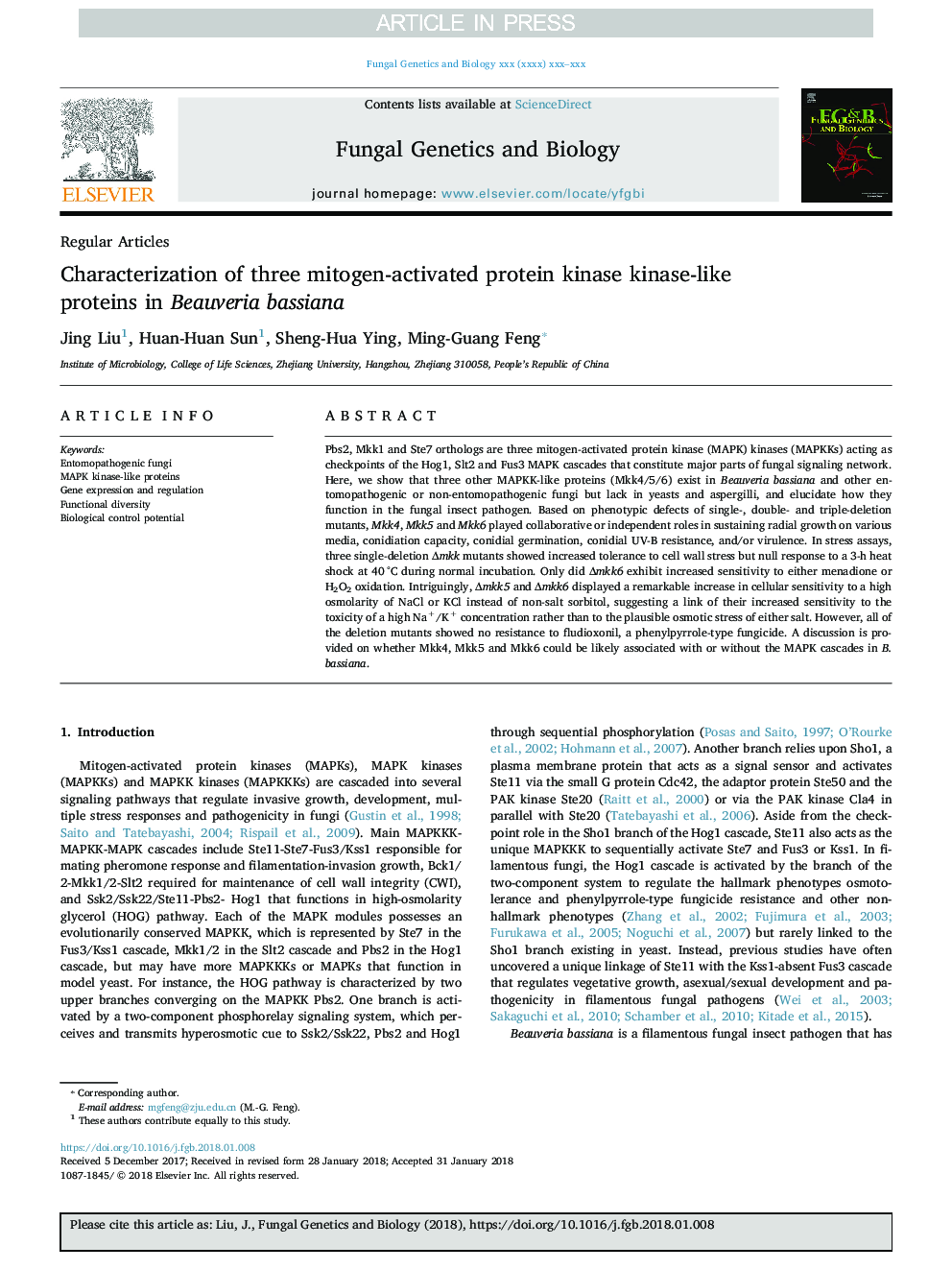| Article ID | Journal | Published Year | Pages | File Type |
|---|---|---|---|---|
| 8470435 | Fungal Genetics and Biology | 2018 | 8 Pages |
Abstract
Pbs2, Mkk1 and Ste7 orthologs are three mitogen-activated protein kinase (MAPK) kinases (MAPKKs) acting as checkpoints of the Hog1, Slt2 and Fus3 MAPK cascades that constitute major parts of fungal signaling network. Here, we show that three other MAPKK-like proteins (Mkk4/5/6) exist in Beauveria bassiana and other entomopathogenic or non-entomopathogenic fungi but lack in yeasts and aspergilli, and elucidate how they function in the fungal insect pathogen. Based on phenotypic defects of single-, double- and triple-deletion mutants, Mkk4, Mkk5 and Mkk6 played collaborative or independent roles in sustaining radial growth on various media, conidiation capacity, conidial germination, conidial UV-B resistance, and/or virulence. In stress assays, three single-deletion Îmkk mutants showed increased tolerance to cell wall stress but null response to a 3-h heat shock at 40â¯Â°C during normal incubation. Only did Îmkk6 exhibit increased sensitivity to either menadione or H2O2 oxidation. Intriguingly, Îmkk5 and Îmkk6 displayed a remarkable increase in cellular sensitivity to a high osmolarity of NaCl or KCl instead of non-salt sorbitol, suggesting a link of their increased sensitivity to the toxicity of a high Na+/K+ concentration rather than to the plausible osmotic stress of either salt. However, all of the deletion mutants showed no resistance to fludioxonil, a phenylpyrrole-type fungicide. A discussion is provided on whether Mkk4, Mkk5 and Mkk6 could be likely associated with or without the MAPK cascades in B. bassiana.
Keywords
Related Topics
Life Sciences
Biochemistry, Genetics and Molecular Biology
Cell Biology
Authors
Jing Liu, Huan-Huan Sun, Sheng-Hua Ying, Ming-Guang Feng,
